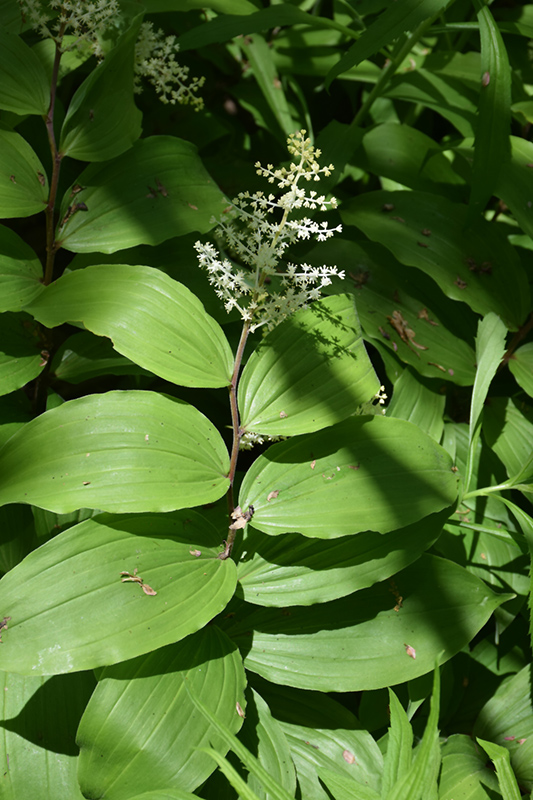Plant Library
Height: 3 feet
Spacing: 18 inches
Sunlight:
![]()
![]()
Hardiness Zone: 3a
Other Names: Convallaria racemosa, Smilacina racemosa
Description:
A native, clump forming wildflower that spreads by thick rhizomes, forming large colonies; racemes of tiny, fragrant white flowers in spring are followed by ruby red berries that persist into fall; not tolerant of high heat and humidity
Ornamental Features
False Solomon's Seal features dainty racemes of fragrant white star-shaped flowers at the ends of the stems from early to mid spring, which emerge from distinctive chartreuse flower buds. Its attractive textured oval leaves are light green in color. As an added bonus, the foliage turns a gorgeous yellow in the fall. It features an abundance of magnificent ruby-red berries from mid summer to early winter, which fade to dark red over time. The brick red stems can be quite attractive.
Landscape Attributes
False Solomon's Seal is an herbaceous perennial with a shapely form and gracefully arching foliage. Its medium texture blends into the garden, but can always be balanced by a couple of finer or coarser plants for an effective composition.
This is a relatively low maintenance plant, and should be cut back in late fall in preparation for winter. It is a good choice for attracting birds, bees and butterflies to your yard. It has no significant negative characteristics.
False Solomon's Seal is recommended for the following landscape applications;
- Mass Planting
- Groundcover
- Naturalizing And Woodland Gardens
Planting & Growing
False Solomon's Seal will grow to be about 3 feet tall at maturity, with a spread of 24 inches. When grown in masses or used as a bedding plant, individual plants should be spaced approximately 18 inches apart. It grows at a medium rate, and under ideal conditions can be expected to live for approximately 10 years. As an herbaceous perennial, this plant will usually die back to the crown each winter, and will regrow from the base each spring. Be careful not to disturb the crown in late winter when it may not be readily seen!
This plant does best in partial shade to shade. It is very adaptable to both dry and moist growing conditions, but will not tolerate any standing water. It is considered to be drought-tolerant, and thus makes an ideal choice for a low-water garden or xeriscape application. This plant should not require much in the way of fertilizing once established, although it may appreciate a shot of general-purpose fertilizer from time to time early in the growing season. It is not particular as to soil pH, but grows best in rich soils. It is somewhat tolerant of urban pollution. This species is native to parts of North America..








